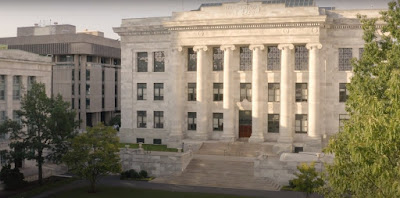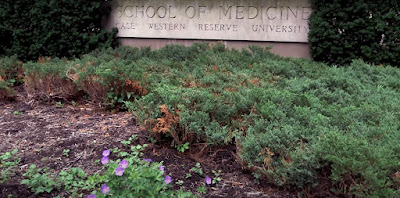What GPA and MCAT do you need to get into Harvard Medical School?
Harvard Medical School (HMS) is one of the oldest and most respected medical schools in the country. It has been ranked the number one medical school in the country for several years in a row. HMS receives more money for research than any other medical school. For those with interests in research, the finances and the facilities can be found to do almost anything.
Admissions/Financial Aid
HMS has recently joined the AMCAS application process. This makes applying to Harvard easier than it has been in the past. Of the 3,500 applicants, only 165 enter the freshman class. The average GPA of enrolling HMS students is 3.94.
Total GPA: 3.74 (10th %ile) to 4.00 (90th %ile)
Science GPA: 3.69 (10th %ile) to 3.94 (90th %ile)
MCAT: 513 (10th %ile) to 525 (90th %ile) (Changes every year)
Interviews are held with one faculty member and with one medical student or with two faculty members. Interviews generally earn,' a light tone. Students are chosen based on their achievements outside of medicine as much as their achievements in the scientific field. This leads to an interesting mix of students.
Total GPA: 3.74 (10th %ile) to 4.00 (90th %ile)
Science GPA: 3.69 (10th %ile) to 3.94 (90th %ile)
MCAT: 513 (10th %ile) to 525 (90th %ile) (Changes every year)
Interviews are held with one faculty member and with one medical student or with two faculty members. Interviews generally earn,' a light tone. Students are chosen based on their achievements outside of medicine as much as their achievements in the scientific field. This leads to an interesting mix of students.
Harvard Medical School Class 2023
Original Site harvard.edu
Tuition is currently $26,000 per year. Estimated yearly costs at HMS are $42,000-543,000. Financial aid packages are available through the financial aid office. Up to $20,000 is offered through Stafford Loans ($8,500 subsidized, $11,500 unsubsidized). Students can apply for an HMS scholarship for the remainder of their balance. HMS scholarships are offered based on need. The financial aid office also directs students to independent loaners that offer aid to Harvard Medical School students.
Preclinical Years
HMS offers several programs for perspective students. For a medical doctor degree, 80 percent of the students aic enrolled in the New Pathway system. The New Pathway comprises traditional medical lectures and case-based tutorials. Two to three mornings per week students gather in small group sessions to dissect real medical cases. Students receive 1 to 2 pages per session and develop extensive differential diagnosises. Each student picks a topic to research based on the tutorial discussions and presents the findings the next session. A physician moderates the discussion but does not teach. As more pages are received, the differential is refined and the pathology and pathophysiology are discussed. This allows students to better incorporate classroom teaching with clinical scenarios. It also helps students develop the skills to find data pertinent to medical cases. Most cases are useful in teaching basic medical concepts. Cases work well in blocks like physiology, endocrinology, or biochemistry. However, in certain blocks cases are useless. Lectures follow the tutorial session and classes usually finish between noon and 1 p.m. This allows students to vigorously pursue interests out of the classroom.
Lectures at Harvard often focus on cuttingedge research. Although interesting, topics may be too esoteric for first and second year students. This means free time is often used for reading the basic lecture materials and text books. During the preclinical years, grades are all pass/fail. A striking feature in the classroom is the lack of competition among students. Classmates frequently help one another. This environment fosters camaraderie and facilitates learning.
New Pathway students are invohed in a patient/ doctor program for the first three years of medical school. New Pathway students meet with preceptors one afternoon a week and learn the skills of history taking and physical exam.
Twenty percent of HMS students are enrolled in the joint Harvard/MIT system called Health Sciences and Technology (HST). This curriculum is traditional in nature. The majority of teaching is through lecture and lab. HST students learn medicine through basic sciences and take classes at MIT as well as Harvard.
HMS also has an M.D./Ph.D. program sponsored by NIH. The average time to completion is seven years. Tuition is paid for through scholarship funds, and students are also offered a stipend for living expenses. M.D./Ph.D. students can enroll in either the New Pathway or the HST system and may choose to complete their Ph.D. at Harvard or MIT.
Clinical Years
The clinical years at Harvard are a rude awakening for many students. The many hours of free time in the first and second years are replaced with long, hard hours in the hospital. In most rotations, students are expected to take overnight call. The pass/fail system is replaced with a four-grade system. Students also receive written evaluations for each rotation. Rotations are selected from some of the top teaching programs in the country. Core rotations include four months of medicine, three months of surgery, 1 months of pediatrics, 1 months of obstetrics/gynecology, one month of radiology, one month of psychiatry, one month of basic science, and several months of elective time.
Social Life
Harvard students represent a diverse and fascinating group of students. Forty to 50 percent ot the classes are women, and 15 to 25 percent of the students are underrepresented minority groups. The social life in the Medical School is active. HMS students are frequently invited to social functions at other Harvard graduate programs and have many social functions of their own. As the years progresses, many people find themselves moving to the surrounding towns. The focus of social life changes from the Medical School to the city.
A Day in the Life: Harvard Medical School Student
Harvard is a wonderful place to attend medical school. The facilities are second to none. Teaching is selfdirected and especially good for those who are motivated. Those used to more structure may find the informal method of teaching hard to adjust to. Harvard prides itself in molding students who will be the leaders in the medical field and has succeeded in doing so. Graduating with a degree from Harvard allows most graduates the opportunity to go anywhere in the country.
Web https://meded.hms.harvard.edu/home
Web https://meded.hms.harvard.edu/home





















Thank you for this information about what causes of chest pain? Recently I read an article on chest pain and I got so many information about chest pain and symptoms of chest pain. It was very knowledgeable article, I am sure it will help you to understand about chest pain.
ReplyDelete